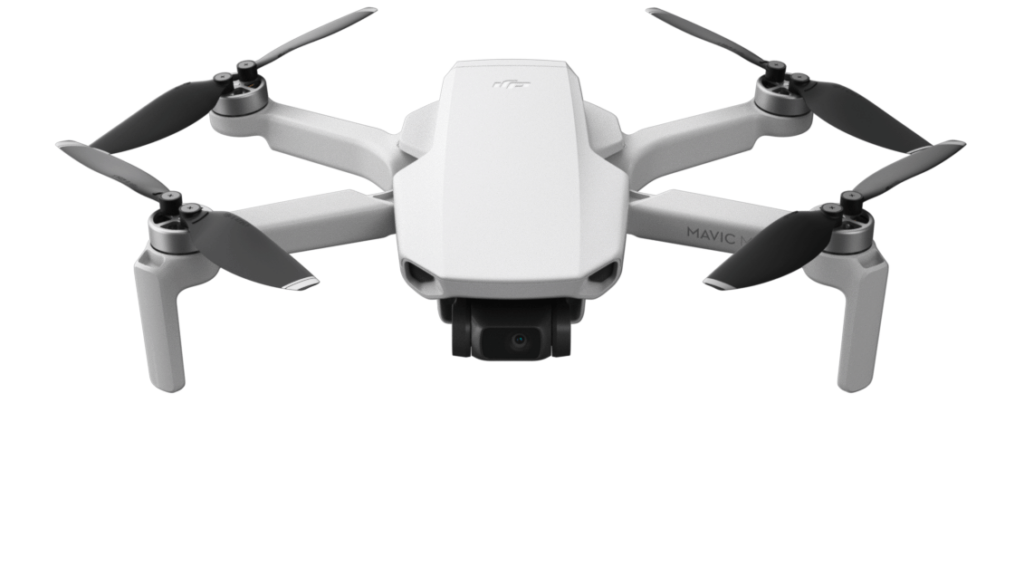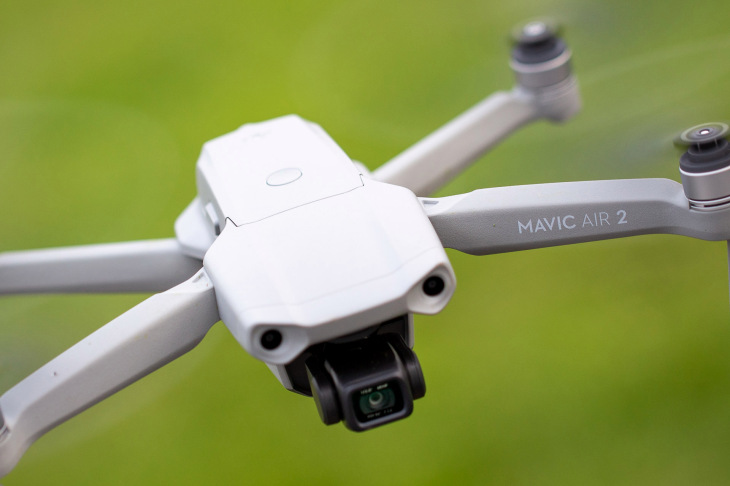Avoid Crashing Your Drone: Flying safely requires that a person knows his or her limits and how the drone works.
Unmanned aerial vehicles are highly complex and therefore rely on various systems to perform well. That means there is no guarantee that there may never be a hardware or software problem. Therefore become acquainted and take proactive measures to ensure that the things that can be controlled and the mistakes that can be avoided so that crashes can be minimized.
After having purchased a drone, it is only natural that a person doesn’t even think much about the possibility of crashing and that it could have been avoided. But human beings don’t always do the right thing, and even when they try, it may be beyond their control, such as mechanical problems or other careless pilots. Studies show, however, that most collisions are due to a failure to take some simple precautions, lack of training, lack of vigilance, etc.
Find out why drones crash and hopefully the following points will be helpful in reducing the possibilities of crashing your drone.
1. Insufficient Knowledge of Drones and How They Function.
Know your drone! Learn how to control it, knowledge is power. Lack of knowledge can sometimes be costly in terms of physical harm or monetary loss. Therefore get used to the controls and pay attention to which way the aircraft is facing. This is often overlooked because it seems so simple. But it isn’t, because if the nose is facing a person, it will move right when it is expected to move left. Remember, it’s a good idea to fly with the nose facing away from the person.
2. Taking Off Too Quickly.
Let the drone hover slightly above the ground for around 30 seconds. This helps the battery to warm up, and if it has issues, they will be noticed while the drone is hovering. This may save you from crashing the drone at heights that can do great damage to the drone.
3. Malfunctioning Rotors or Propellers.
These are made of sturdy and soft material so as not to hurt people or cause damage to other objects. They are thus fairly vulnerable to bending out of shape after several bumps. This is why it is critical to check each of the rotors before a flight to make sure they are in perfect condition.
4. No GPS Signal.
The signal is unlikely to work if the drone is flown indoors. It must fly in open areas away from tall buildings or other kinds of structures when possible.
5. Computer Error.
Compasses that are incorrectly tuned are a common cause of unmanned aerial vehicle (UAV) crashes. Compasses in drones can be detuned from any magnetic and radio frequency (RF) source. Keeping the drone too close to magnets should be avoided. These are often found in car speakers during transportation as well as flying in an environment with high electromagnetic interference, such as flying near cell phone towers and high voltage power lines.
6. Disconnected Video Transmission.
Loose cables and damaged ports are typical reasons drones crash. And this can happen at any time, even one’s first flight, but more likely on later flights. This is why it is essential to check the cables to make sure they are plugged in tight before a flight and unplugged carefully after. This should become a habit because it will keep the ports in good working condition.
7. Hitting Return to Home Too Soon.
The typical reaction of a pilot when he has lost control of his drone is to hit the Return to Home (RTH) button. Because most drones can’t avoid obstacles it means that it will naturally trace a straight line to the home point even if there are obstacles in the way such as trees, buildings or electric poles in the way. In such an instance, the drone will crash. Yet one shouldn’t panic, but stay calm and press the RTH button every time one loses control of the UAV and then analyze what happened and learn from it.
8. Incorrect Home Point.
This cause of crashing sometimes takes place when the GPS lock is lost during flight and then regained, which causes the drone to recalibrate an incorrect home point. Since the home point can be either the point of departure or where the remote controller. It is therefore necessary to check to make sure it is correct. Furthermore, keep in mind that the return home altitude should be set higher than anything in the area. Unless the flight is in a city or near some unusually tall structure, 100 meters should be safe.
9. Power Failure.
Flying with a fully charged battery should be standard practice of all UAV operators. It is foolish to attempt flights that are longer than short flight demonstrations. There is always the possibility that the operator forgets the limitations and ends up losing power mid-flight.
10. Insufficient Battery Power.
A good standard to keep in mind when flying is to have at least 30% power in reserve in case an emergency delays the landing. In such cases the drone will have enough power to deal with the problem or find a new landing. Even though some UAVs have a failsafe feature where the drone automatically flies back toward the home base once the battery reaches 10% of the power in reserve. Although this is a good feature, if there are difficult objects such as trees or other structures in the path of home base the drone will most likely fly into them.
11. Bad Weather.
This means extreme weather conditions where there is heavy wind and/or rain as well as extreme cold and heat. Any small drone is unstable in windy weather and DJI drones don’t take wind speed into account when calculating the time it takes to return home. This means that if you are far away, you may not get back to the point of departure in time. So you need to plan accordingly. Plan ahead before trips in case of inclement weather.
12. Large Species of Birds.
Try to avoid flying near large species of birds since certain species are disturbed by drones, such as seagulls or raptors. Some attack drones in order to defend their territory.
13. Power Lines, Wires and Tree Branches.
Watch out for power lines, wires, and tree branches during flight because the obstacle avoidance sensors can’t detect thin objects, so you will need to avoid them yourself.
14. Out of Line of Sight.
Keep your drone within line of sight to avoid potential collisions.
15. Crashing into Another Drone.
Drones are never 100% safe since there may be other UAVs in the sky. Collision is possible since pilots may be unaware of each other’s presence in a certain area and this is especially possible if they are performing complex flight maneuvers, or racing.
16. Mistaking the Direction of the Drone.
Since flying the drones at high altitudes tends to be tempting, it may also cause problems because the higher the flight, the more difficult it is to keep track of the drones, especially for those new to this venture. At significant heights, it becomes increasingly difficult to mistake the nose for the tail and as a result, to misdirect the UAV. It is necessary, therefore, for beginners to make themselves familiar with their new equipment. Avoid Crashing Your Drone
Because there could be crashes eventually, what should pilots do?
The following are some steps that may be helpful after retrieving the drone from the location where it crashed:
1. Shut off the UAV/controller and remove the battery and props.
2. Clean all dirt/sand/debris from the drone using alcohol pads.
3. Manually turn the rotors while the drone is upside down to dislodge any sand/dirt and then blow or use compressed air in each of them to remove any remaining dirt.
4. Check for gimbal range of motion, bent parts, or cracks.
5. Check the camera for cracks or loose wires.
6. Check the battery for structural damage.
7. Remove all props and check for any cracks or deformities. Replace any props that show signs of damage.
8. Check all gimbal pads and drop protectors to make sure they are securely sealed and intact.
9. Check the entire frame for cracks including the landing gear.
10. Check every motor to make sure it was correctly seated and not loose (including all the screws).
11. Blow sand/debris/dust out of every moving part (again).
12. Re-insert the battery into the drone when you have completed a thorough check/clean.
13. Reboot the drone on a flat surface and let it go through start-up procedure again.
14. Calibrate the compass and then the IMU.
15. Check the gimbal for full range of motion using gimbal control and then by moving the UAV around.
16. Start the motors without props and check for any wobble.
17. Shut down the motors again, attach the props, restart the motors, and re-check for wobble again to make sure it is working normally.
18. Bring the UAV to a slight hover just above eye-level and check for strange movement/shaking.
19. While recording video, do basic maneuvers (forward, backward, left, right, up, down).
20. Review the video to make sure there is no additional shakiness.
21. Do one long-distance flight low and slow (not over water) to ensure everything is working fine.* DJI, “10 Tips for Preventing Drones from Crashing” (2108-04-06)
Experience, while very helpful, nevertheless does not guarantee safety 100% of the time, but do the best possible to avoid crashing your drone. Crashes can happen to anyone. Sometimes there are conditions that are beyond one’s control. Even if one operator is being careful and vigilant, another pilot may not be as cautious to avoid crashing your drone. It only takes one pilot to put other drones in danger. Avoid Crashing Your Drone
When, not if, there is a crash, the first thing to do is to try to retrieve the drone. Once the drone is retrieved, it should be carefully inspected for damage. This is important so the damage can be fixed, but it is also important in case the damage is related to a manufacturing problem. That way a low-cost or free warranty repair service may be possible, especially if the drone was insured.
Although most accidents can be prevented by training, vigilance, and caution, it is important to learn from any crashes we may experience so we won’t repeat them. Avoid Crashing Your Drone



